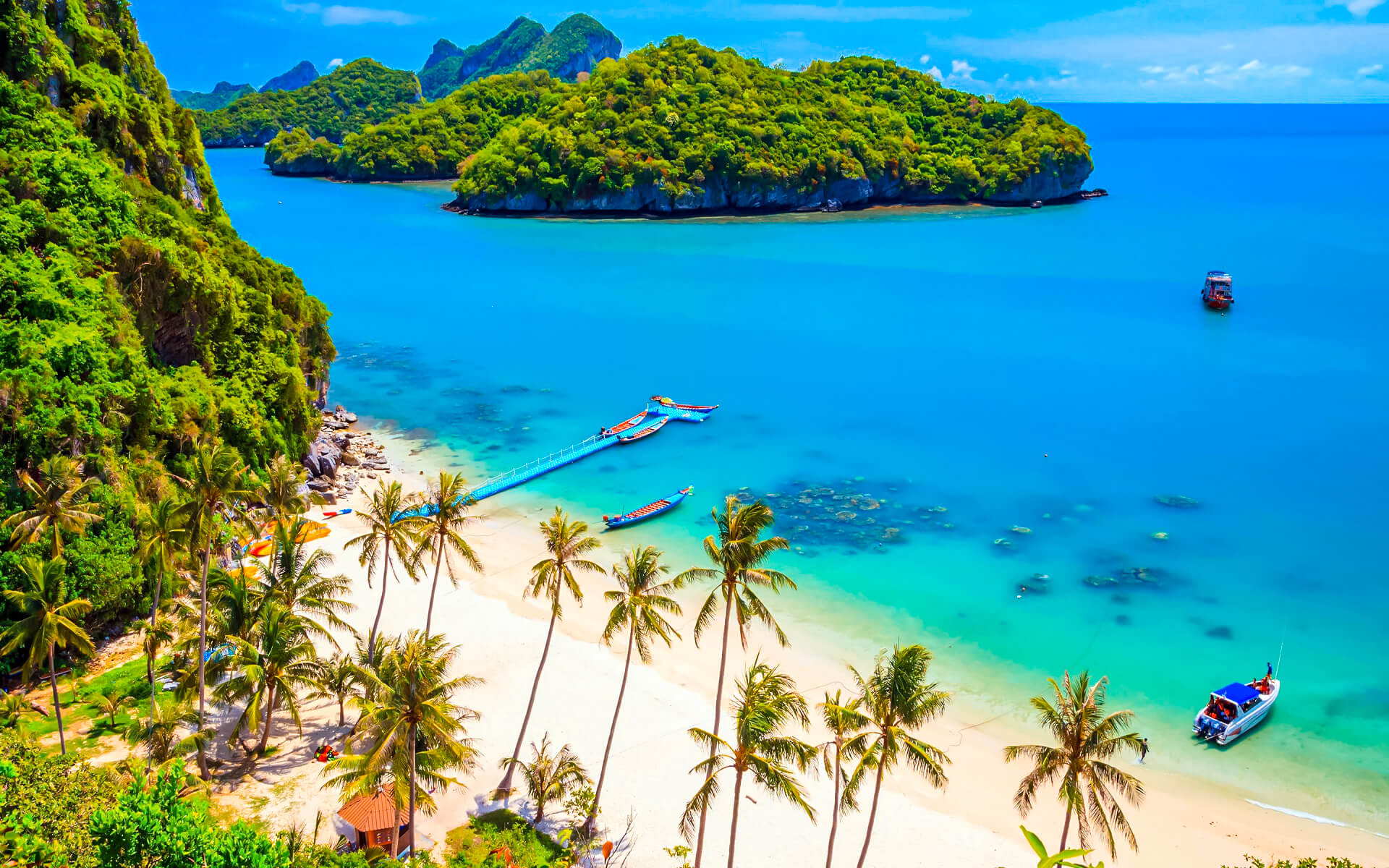Ko Samui, sometimes known simply as Samui, is an island in the Gulf of Thailand, about 700 kilometers south of Bangkok and 80 kilometers off the eastern coast of Southern Thailand.
With an area of 228.7 km2, a population of approximately 63,000, and a hotel occupancy rate of 73 percent as the number of guests grows, Ko Samui is Thailand’s second-largest island after Phuket. The island has an abundance of tourism resources, including sandy beaches, coral reefs, and coconut palms.
The rise of tourism in Ko Samui has led in the construction of more resorts, bungalows, and luxury private villas on the island. The island’s entire hotel room inventory of 17,479 in 2013 will be supplemented by an additional 459 new rooms by 2015. A steady change in demand has resulted in an increase in Asian tourists and families, although the top three source markets have been Germany, the United Kingdom, and Thailand, with a combined 27 percent share. Bangkok Airways continues to modernize its fleet with new Airbus jets, phasing out outdated ATR 72 propeller planes, providing an extra 189,000 airline tickets for Samui visitors. Bangkok Airways has already extended its daily flight schedule from 36 to 50.
Overall, Ko Samui is a pretty large island, the second largest in Thailand after Phuket. Chaweng and Lamai are the most popular and commercialized beaches, whereas the northern beaches and neighboring towns of Mae Nam, Bophut, Bang Rak (Big Buddha), and Choeng Mon are more serene options, while the west coast beaches are still (relatively) quiet.
Samui, an island of immense natural beauty and diversity, is home to around 50,000 full-time residents, 90 percent of whom are Buddhist. The coastal lowlands’ palm-fringed coastline and coconut and fruit agriculture ascend to a central granite massif, the slopes of which are clothed in virgin rainforest.
Samui, at 247 km2, is Thailand’s second biggest island and the largest of an archipelago of over 80 (mainly deserted) islands that comprise the Ang Thong National Marine Park, a kayaking and snorkeling paradise. Samui is large enough for serious investigation by the adventurous and athletic, yet it can be circumnavigated in a few of hours by motorcycle or automobile.
The island was most likely initially populated some 15 centuries ago by fisherman from the Malay Peninsula and south China. It first appears on Chinese maps in 1687, with the name Pulo Cornam. Samui is a strange name in and of itself. Perhaps it is a corruption of the Chinese word Saboey, which means “safe refuge,” or it is an expansion of the name of one of the natural trees, mui.
Until the late twentieth century, Samui was an isolated self-sufficient village with limited connectivity to the Thai mainland. Until the early 1970s, there were no roads on the island, and the 15-kilometer travel from one side to the other required a full-day hike through the steep interior rainforests.
The first travelers landed to Ko Samui in the early 1970s on the back of a coconut boat. For many years after that, the island had just a few bungalows and a trickle of visitors. Things began to change in the early 1990s, when visitors began to arrive in full boats, and the area has developed significantly since then. Samui is becoming Thailand’s second most popular island getaway (Phuket is first). With its white sandy beaches, sparkling coral, lush lagoons, stunning waterfalls, swaying coconut palms, and crystal blue water, Ko Samui may not be the most beautiful island in Thailand, but it is nevertheless a sanctuary of natural beauty. The water at Bophut Beach, on the other hand, is often muddy, particularly around December.
Unfortunately, Ko Samui’s expansion is beginning to take its toll, and the beaches of Chaweng and Lamai are packed during the summer season.


